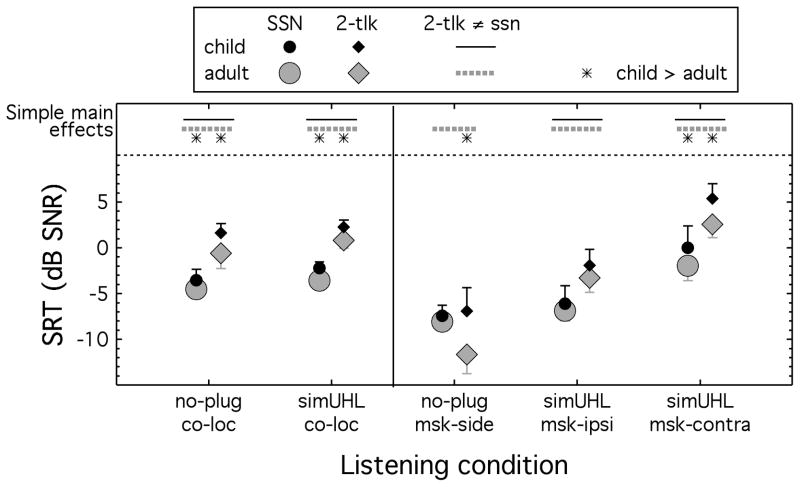Figure 1.
Group average SRTs (in dB SNR) required to reach 50% correct sentence recognition are shown for children and adults in all listening conditions, indicated on the abscissa. Results in the left panel reflect those obtained in co-located target-masker conditions, while those in the right panel reflect those obtained in spatially separated target-masker conditions. Symbol shape indicates masker condition. Circles indicate SRTs obtained in speech-shaped noise, while diamonds indicate SRTs obtained in two-talker speech. Symbol shading and size designate age group. Small black symbols represent data for children, and large grey symbols represent data for adults. Error bars represent one standard deviation of the mean. Results of simple main effects testing appear at the top of each panel. Stars indicate significant differences between SRTs of children and adults within a condition. Lines indicate significant effects of maker type within data of either children (solid black lines) or adults (dashed grey lines).

